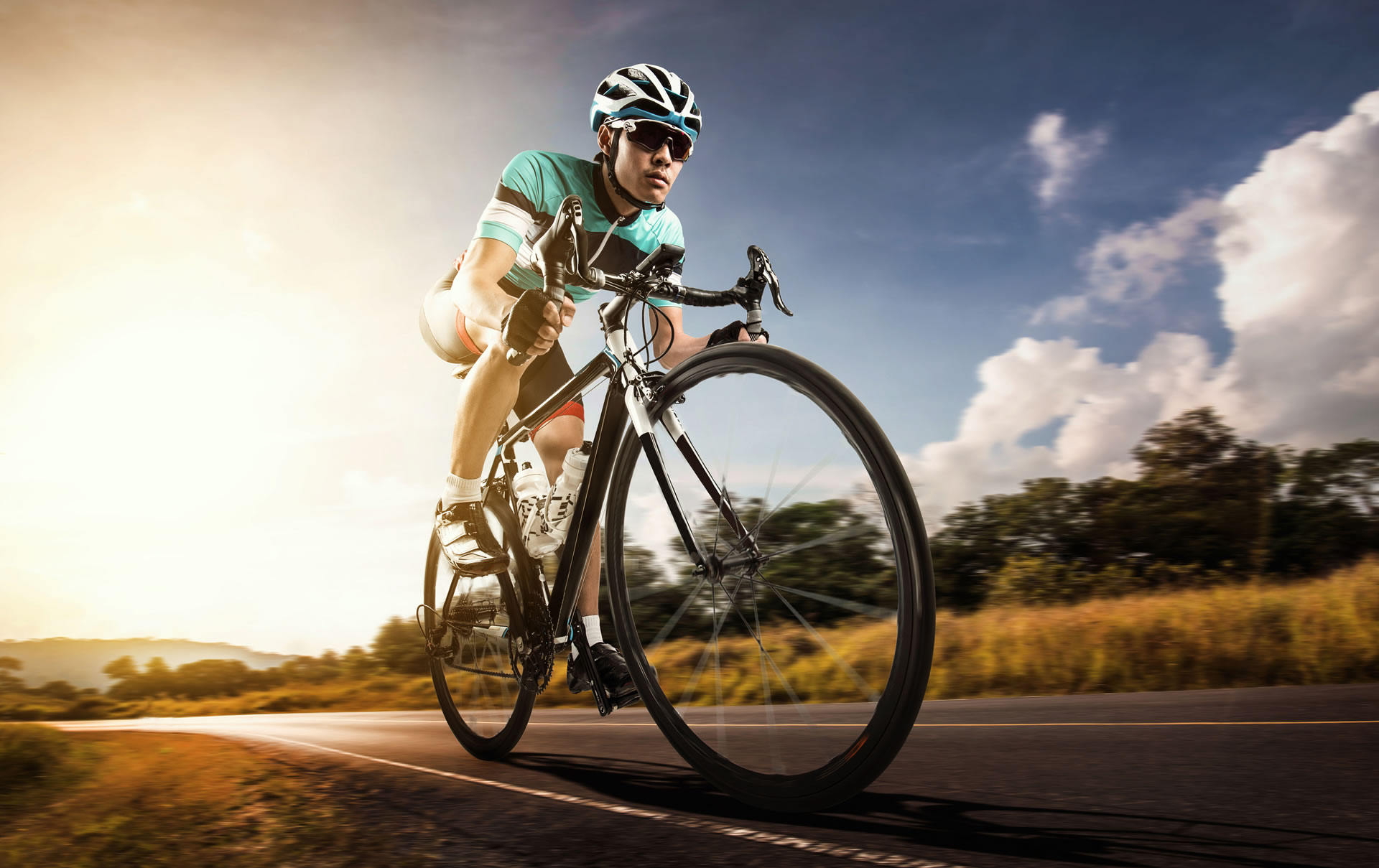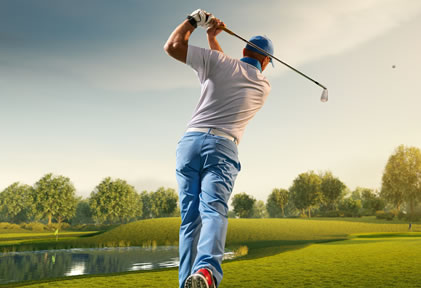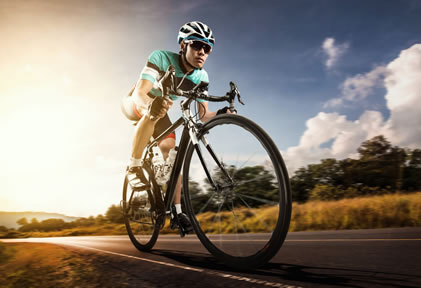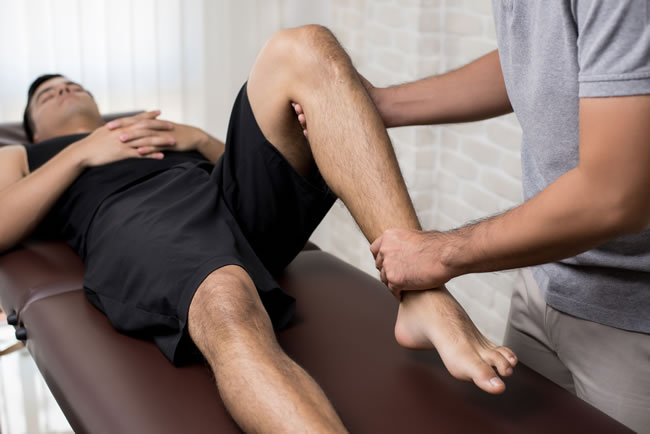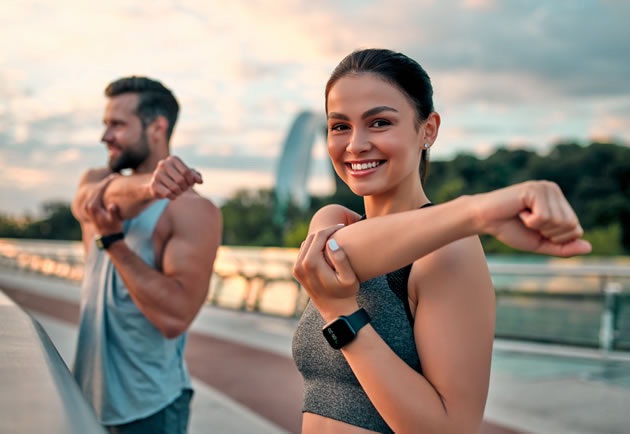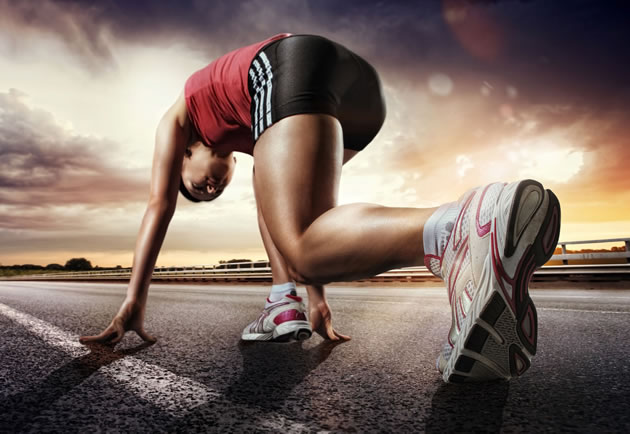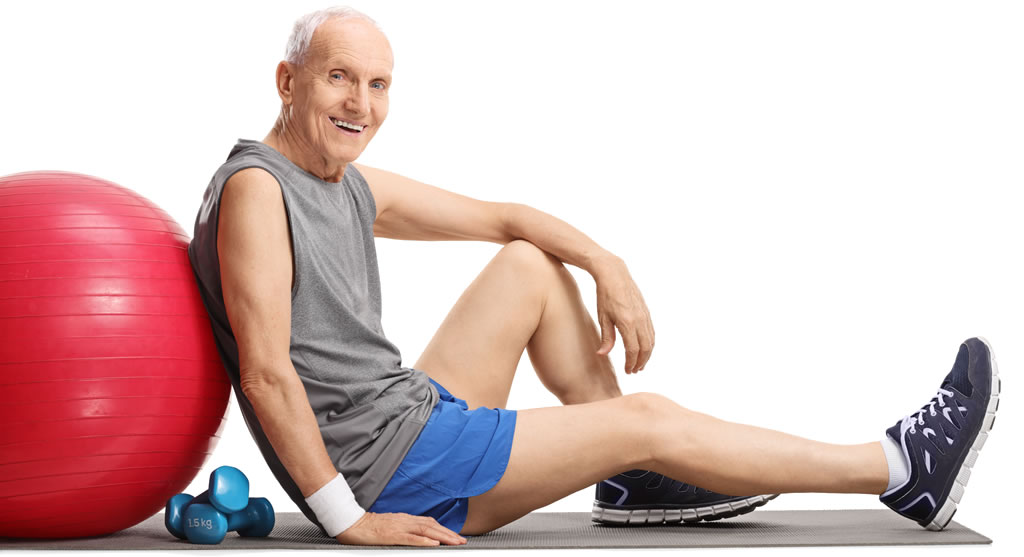Cycling
PRACTICAL GUIDE
There are two main types of cycling injury, those caused by falling off (which we don’t discuss below) and the issues caused by overtraining, biomechanical stresses, often due to muscle imbalances, and incorrect bike set-up. It is particularly important for the sake of future injury prevention to identify the root cause and address this ASAP.
The 8 Most Common Cycling Injuries and How to Avoid Them
Unless you fall off, cycling is a sport blessed by its body- friendliness! In fact, riding big miles is more likely to get you fit than fractured. But, like any endurance sport, cycling can produce a catalogue of niggling aches and pains, which if left untreated can become more serious. To give your pain a name and point you down the right road to recovery, we’ve listed the 8 most common cycling ailments, their most likely causes, and how to go about fixing them.
1
Knee Pain
One of the most common cyclist knee complaints is pain in the kneecap. This is most likely to be patellofemoral pain syndrome (PFPS). PFPS is often worse when walking up and down hills/stairs or sitting for long periods of time. It may include wasting of the quadriceps (thigh) muscles if the injury is an old one, and tight muscles around the knee joint.
PFPS occurs when the patella (kneecap) rubs on the femur (thigh) bone underneath. It is believed that incorrect tracking (gliding) of the patella over the femur is a significant factor and results in damage to the cartilage underneath the patella. The cause may be from external factors like an increase in training, the seat being too low or riding too long in big gears. Internal factors such as poor patella tracking may result from excessive pronation (flat foot), rotation of the lower leg and tight or weak muscles around the thigh and pelvis stabilising muscles.
TIP Try variation in your pedal cadence – breaking up your training by pedalling in a high cadence (90 – 120 revs per minute) can help prevent injury. Raising the seat if it’s too low will reduce the amount of knee flexion and utilise more of the hamstring and gluteal (buttock) muscles thereby off-loading the quadriceps muscle and patellar tendon. If your foot rocks from side to side, use an insert to stabilise the rear of your foot, thereby reducing strain on the knee and increasing efficiency.
2
Back Pain
After knees, the back is probably one of the biggest causes of pain for cyclists, with lack of flexibility and bad posture generally the cause. Hunching forward on Your bike, and probably also at work, places strain on your spine, loading structures for prolonged periods of time. Cyclists’ back pain is often due to mechanical factors.
Have your bike properly fitted to your body, then look at your body. Lack of flexibility, such as excessive hamstring and hip flexor tightness can contribute to low back pain. Differences in leg length are common mechanical problems leading to imbalances in the spine. Core strength is very important to avoid low back pain. Core strength comes from a collection of deep muscles both big and small that work together to give you core lumbar and pelvic stability.
TIP Low back pain may arise in cyclists that push big gears, especially while climbing. The angle of your back in relation to the bike can increase or decrease the strain on your back. Consider alternating climbing positions by standing up, changing the angle of your back, especially during long rides or climbs, or talk to your therapist about a back rehabilitation programme to focus on strengthening your core muscles.
3
Neck Pain
Neck pain from cycling usually stems from poor posture and weak muscles. Pain caused by neck hyperextension is made worse by positional issues on the bike, combined with a lack of flexibility. Just as you have core stabilisers around your lower back, you have stabiliser muscles called deep neck flexors around your neck to hold your head up.
When your neck stabilisers are weak or fatigued quickly it is left to the trapezius muscle (that goes from the base of your skull to the tip of the shoulder) to support your head as you lean forward. And when these ‘stand-in’ muscles fatigue you can experience pain in the back and sides of your neck. Restore balance by keeping the neck muscles loose and relaxed through a routine of strengthening and stretching exercises.
TIP Change your posture on the bike. If you’re reaching too far forward, or your handlebars are too low, shorten the stem to shorten your reach. Raise your bars and riding more upright will reduce the strain you’re putting on your back and neck. Don’t forget to change your hand positions at regular intervals, and sit up on the bike to stretch, straightening out your neck and back to vary the loads on the different muscle groups.
4
Iliotabial Band (ITB) Pain
While it is more commonly known as “runner’s knee”, ITB syndrome is another common cycling injury. ITB pain is typically associated with prolonged, repetitive activity. Symptoms include pain on the outside of the knee, tenderness and sometimes swelling. In some cases, pain is felt simply walking or going up and down stairs. You may feel stiff or tight after periods of inactivity. The ITB is a tendinous fascial band that originates on the iliac crest (hipbone) and attaches to the outside of the knee. As your knee bends and straightens repeatedly, the band can become inflamed by rubbing over bony condyles. Other contributing factors may include tightness of thigh, hip and buttock muscles as well as weak pelvic stabilising muscles.
TIP Ensure your seat is at the optimal height for your body. If you pronate (are flat-footed) you may need orthotics or a wedge inside your cycling shoe to stop the leg and knee from rotating inwards putting further tension on the ITB. Tucking the knees in too tight, to increase streamline will also add tension and greater friction to the ITB.
5
Achilles Tendon Pain
The Achilles tendon is the tendon at the back of the ankle, connecting the gastrocnemius (calf) muscle to the heel. If your Achilles is sore during or after riding you may have Achilles tendinopathy. Inflammation, micro-tears or compromised blood flow, often caused by overuse, could put a stop to your riding season. There is a whole host of stretching and strengthening options available from your therapist.
TIP Having your saddle too high keeps the foot plantarflexed (toe pointed down), causing constant contraction of the calf muscles and load on the tendon. Lowering your seat and making sure that your cleats aren’t pushed all the way forward towards the toe will help to even out what muscles you’re using to pedal.
Conclusion
Many cycling overuse injuries can be prevented, remember A–B– C. Be assessed for underlying ALIGNMENT issues such as muscle weaknesses, flexibility, leg length discrepancies and being flat-footed. Then check you have the correct BIKE set-up, correct technique and cycling posture. Finally, CONDITION yourself with appropriate strengthening and stretching exercises and progress your training moderately and always, always listen to your body!
The Big Six Sports Injuries
Running
The high rate of running injuries makes focusing on prevention key. If you can prevent injuries, you’ll be able to run more consistently, reach a higher weekly mileage, do more challenging workouts – and ultimately, race a lot faster for longer.
Skiing
There’s no doubt about it, snow sports are fun. Whether you’re hurtling down the side of a mountain at 40 mph, or exploring backcountry terrain; snow sports always involve excitement, adventure and exhilaration.
Golf
Basic cardiovascular fitness is essential. Regular walking, running or cross-training on a stair machine, elliptical trainer, swimming, and cycling are all ways to improve general fitness.
Tennis
The sun is shining, the strawberries are ripening and the tennis season is upon us! The tournaments held at the Queen’s Club and The All England Club in London are just around the corner, inspiring many of you to get back out on the court.
Cycling
There are two main types of cycling injury, those caused by falling off (which we don’t discuss below) and the issues caused by overtraining, biomechanical stresses, often due to muscle imbalances, and incorrect bike set-up.
Swimming
Swimming is one of the most popular sports in the world. We swim in the sea, pools, lakes, streams, rivers and even ponds. And given that 70% of the Earth’s surface is water, we’re not short of opportunities.
Start your journey to a healthier, stronger body today!
RESTORATION
Once we have got you to a stage where you injury is healed, we then give you a rehabilitation programme to restore your strength and enable you to resume your sporting activities.
prevention
Are you currently engaging in sport but worried about getting injured in the future? Why not work with us so we can help get your body strong and supple to minimize any disruption to your exercise routine?
Exercise Login
Comprehensive exercise programmes specific to you.

